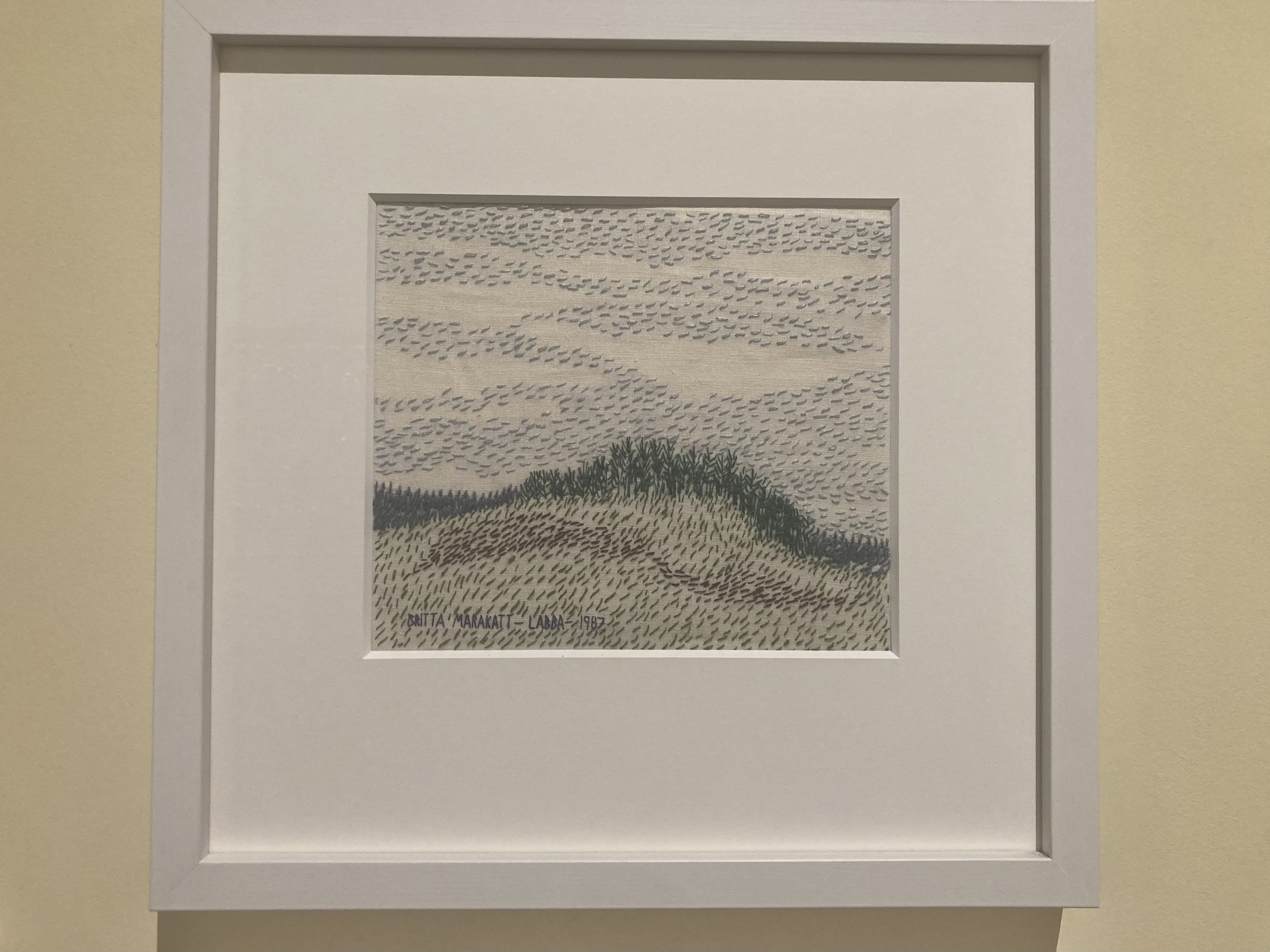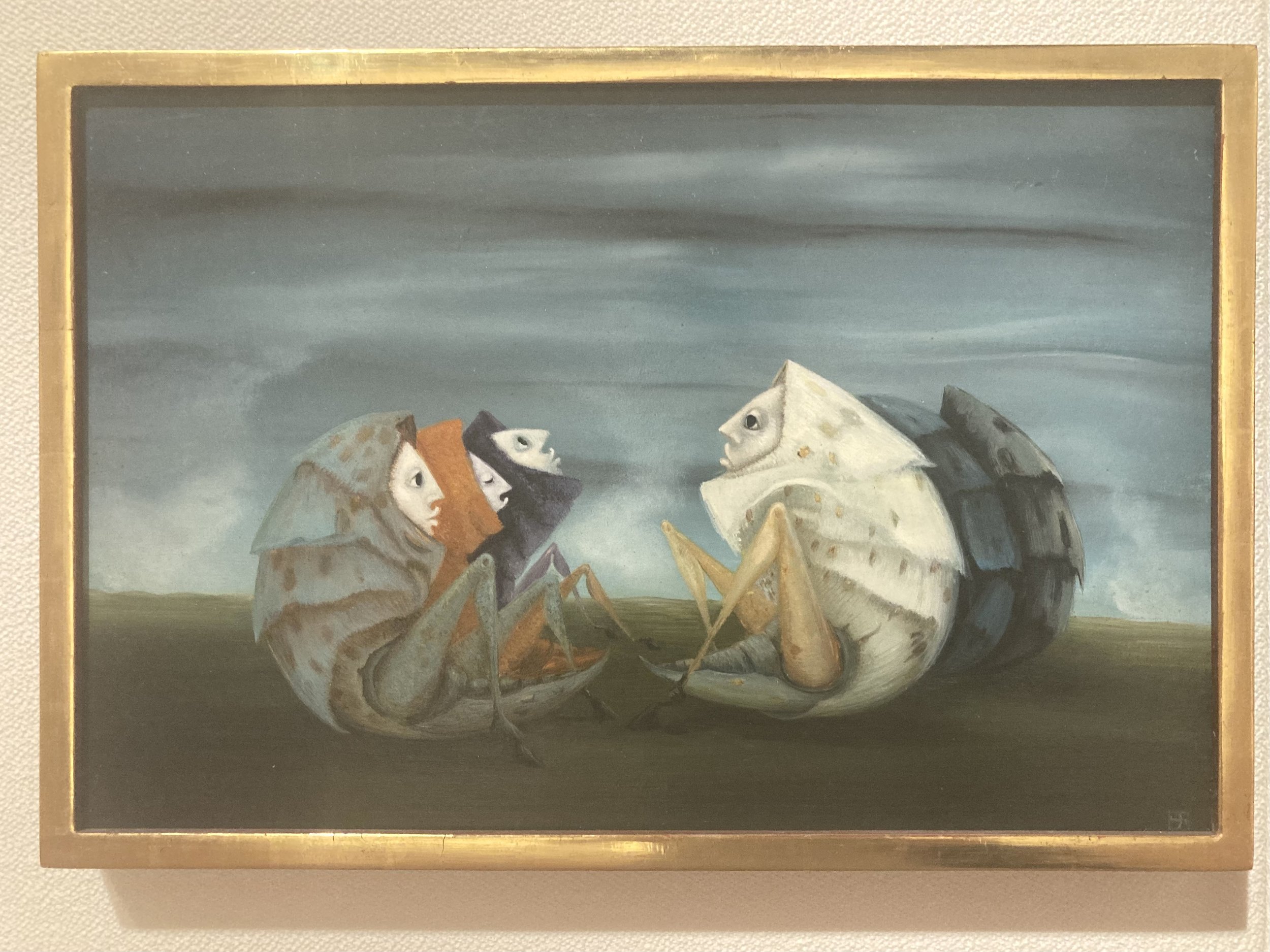Day at the Biennial
I came to the exhibition The Milk of Dreams, curated by Cecilia Alemani, very unprepared, so a quick look in the bookstore was not a bad introduction to what I could expect; the catalogue is as thick as a stack of three telephone books from my childhood, there are lots of books on famous female artists from the last 100 years and a poster that reminds me of 1970s theater aesthetics.
Inside the Arsenale venue the spaces are big, but every centimeter seems planned out and honed. There is a smooth flow of big, medium- and tiny-sized art works, and the mix of old and new doesn’t feel contrived. And at least among the newer works, the artists are not the obvious superstars. Several artists are represented by work they did late in their life. Painting by Ficre Ghebreyesus (and a random visitor’s dress) followed by embroidery by Britta Marakatt-Labba.
It’s not like the old is there only as a backstory, but at its best the new works can help in reading the old with fresh eyes. Bridget Tichenors surrealism from the 1950s looks very old and fresh at the same time, as do old plant drawings and body part models.
Sculptures, embroideries, drawings, paintings, a little purse by Sophie Tauber Arp, modernist rugs by Safia Foudhaïli, a new, extremely well made huge tapestry by Igshaan Adams, it might be pretty and soothing, but wall texts reveal artists also engaged with activism and education.
In the middle of all this colorful material perfection I laugh to myself that I wouldn’t be surprised if I suddenly saw paper flowers in the mix.
Turning around the corner, and there they are! Tetsumo Kudo’s fluorescent giant crepe paper work Flowers, made in 1967/68.
Pretty as any flowers, frightening as nature gone terribly wrong.
Towards the end of this venue where a huge cat tale peeks out of another room, I notice a friend from back home, and it feels wonderful chatting away a little. The mix of strange and homey is complete.
There are more flowers over in the other part of the exhibition in Giardini: I have forgotten the artist’s name, and if I remember right it’s an older 20th century watercolor, even if it looks as new as any. Too clichéd in most contexts, but here it works.
This is a 1937 surrealist photography for a children’s book by Claude Cahun, usually more known for her self portraits. It’s great to see lesser known works, but sometimes the most obvious and famous works work wonders in the context, like Rosemarie Trockel’s Untitled from 1985. So simple, but the funniest comment on painted linen canvas I can think of. What is really a sign of quality?
It’s such a classical, old fashioned show, even if little here was seen in any of those classical old fashioned shows before it. The themes of complicated bodies, nature dissolving and good and bad dreams coming alive are relatable for most, but I suspect that the audience that this show speaks to most forcefully is perhaps the most faithful audience of all, women like me who aren’t so young anymore.








